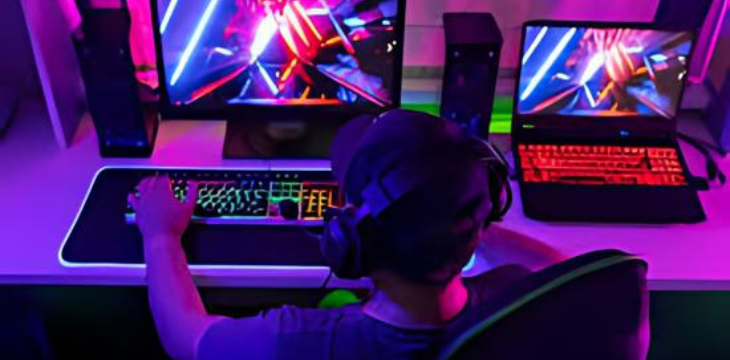Table Of Contents
- 1 Introduction
- 2 Why Building a Budget Gaming Setup is Totally Doable
- 3 Step-by-Step Guide to Building Your Budget Gaming Setup
- 4 FAQs About Building a Budget Gaming Setup
- 5 Conclusion: Game On Without Going Broke
Introduction
So, you’re itching to dive into the world of gaming, but your wallet’s giving you the side-eye? Don’t sweat it! Building a gaming setup on a tight budget isn’t just possible—it can be downright fun. Whether you’re a newbie or a seasoned gamer looking to upgrade without emptying your pockets, this guide on wie man eine gaming-konfiguration mit begrenztem budget erstellt has got you covered.
Let’s face it: gaming can be an expensive hobby. But with a little creativity, some smart shopping, and a dash of patience, you can assemble a rig that’ll have you fragging noobs and conquering quests in no time. Ready to get started? Let’s roll!
Why Building a Budget Gaming Setup is Totally Doable
Before we dive into the nitty-gritty, let’s bust a myth: you don’t need the latest, most expensive gear to enjoy gaming. Sure, those flashy RGB-lit setups with liquid cooling and 4K monitors look amazing, but they’re not a must-have.
Here’s the deal: wie man eine gaming-konfiguration mit begrenztem budget erstellt is all about prioritizing. Focus on the essentials, cut corners where it doesn’t hurt, and you’ll be gaming like a pro without selling a kidney.
Step-by-Step Guide to Building Your Budget Gaming Setup
1. Set a Realistic Budget
First things first: figure out how much you’re willing to spend. Are we talking 500?500?700? Maybe even 1,000?Whateveryournumber,sticktoit.Trustme,it’seasytogetcarriedawaywith“just1,000?Whateveryournumber,sticktoit.Trustme,it’seasytogetcarriedawaywith“just50 more” upgrades.
Pro Tip: Allocate your budget wisely. Spend more on components that directly impact performance (like the GPU and CPU) and save on peripherals (like keyboards and mice).
2. Choose the Right Components
Here’s where the magic happens. Let’s break it down:
a. The Heart of Your Setup: The CPU
Your processor is the brain of your gaming rig. For budget builds, AMD’s Ryzen 5 series or Intel’s Core i3/i5 are solid picks. They offer great performance without costing an arm and a leg.
b. The Muscle: The GPU
The graphics card is where you’ll want to splurge a bit. Look for mid-range options like the NVIDIA GTX 1660 Super or AMD Radeon RX 580. These cards deliver excellent performance for 1080p gaming without breaking the bank.
c. The Backbone: RAM
8GB of RAM is the bare minimum, but 16GB is the sweet spot for gaming. Thankfully, RAM prices have dropped, so you can snag a decent kit without spending a fortune.
d. The Storage: SSD vs. HDD
An SSD will give you faster load times, but they’re pricier than HDDs. A good compromise? Get a smaller SSD for your operating system and favorite games, and a larger HDD for everything else.
e. The Shell: The Case
Cases come in all shapes and sizes, but for a budget build, focus on functionality over flashiness. Look for something with good airflow and enough space for your components.
f. The Lifeline: Power Supply
Don’t skimp on the PSU! A cheap power supply can fry your entire setup. Aim for a reputable brand with at least 80+ Bronze certification.
3. Hunt for Deals and Second-Hand Gems
One of the best ways to save money is by shopping smart. Check out:
- Online Marketplaces: Sites like eBay, Craigslist, or Facebook Marketplace often have great deals on used components.
- Sales and Discounts: Keep an eye on Black Friday, Cyber Monday, or seasonal sales.
- Refurbished Items: Many manufacturers sell refurbished parts at a fraction of the cost, and they often come with warranties.
4. Don’t Forget the Peripherals
Your gaming experience isn’t just about the rig itself. Here’s what you’ll need:
- Monitor: A 1080p monitor with a 60Hz refresh rate is perfect for budget builds.
- Keyboard and Mouse: You don’t need a $200 mechanical keyboard to start. Basic gaming peripherals will do just fine.
- Headset: Look for a comfortable headset with decent sound quality.
5. Assemble and Optimize
Once you’ve got all your components, it’s time to put them together. If you’re not confident about building it yourself, there are plenty of tutorials online. After assembly, optimize your system by:
- Updating drivers.
- Tweaking in-game settings for better performance.
- Cleaning up unnecessary files and programs.
FAQs About Building a Budget Gaming Setup
1. Can I really game on a budget?
Absolutely! While you might not be running games at ultra settings, a well-planned budget build can handle most modern games at medium to high settings.
2. Should I buy pre-built or build my own?
Building your own PC is usually cheaper and allows for more customization. However, if you’re not comfortable with assembly, pre-built PCs can be a good option—just shop around for deals.
3. How often should I upgrade my setup?
It depends on your needs and budget. Generally, upgrading every 3-4 years keeps you in the game without constant spending.
4. What’s the most important component for gaming?
The GPU (graphics card) has the biggest impact on gaming performance, so prioritize it when budgeting.
Conclusion: Game On Without Going Broke
And there you have it—your ultimate guide on wie man eine gaming-konfiguration mit begrenztem budget erstellt! Building a gaming setup on a budget isn’t just about saving money; it’s about making smart choices and getting the most bang for your buck.


